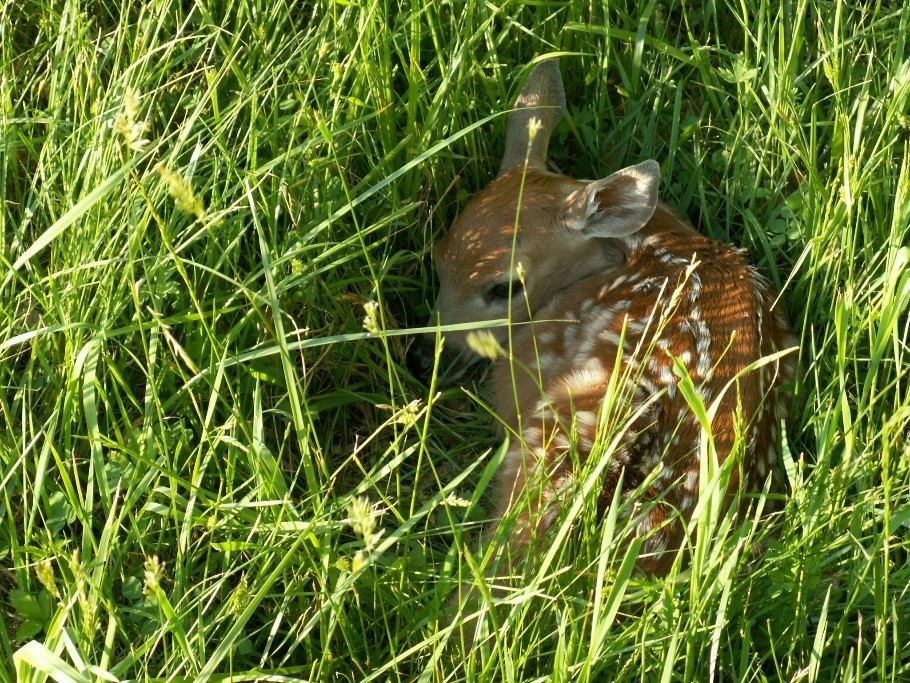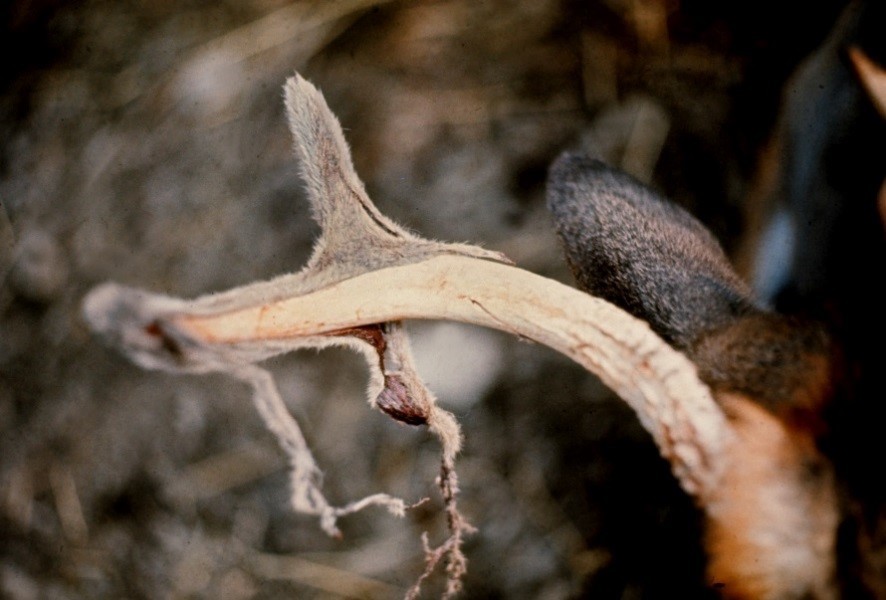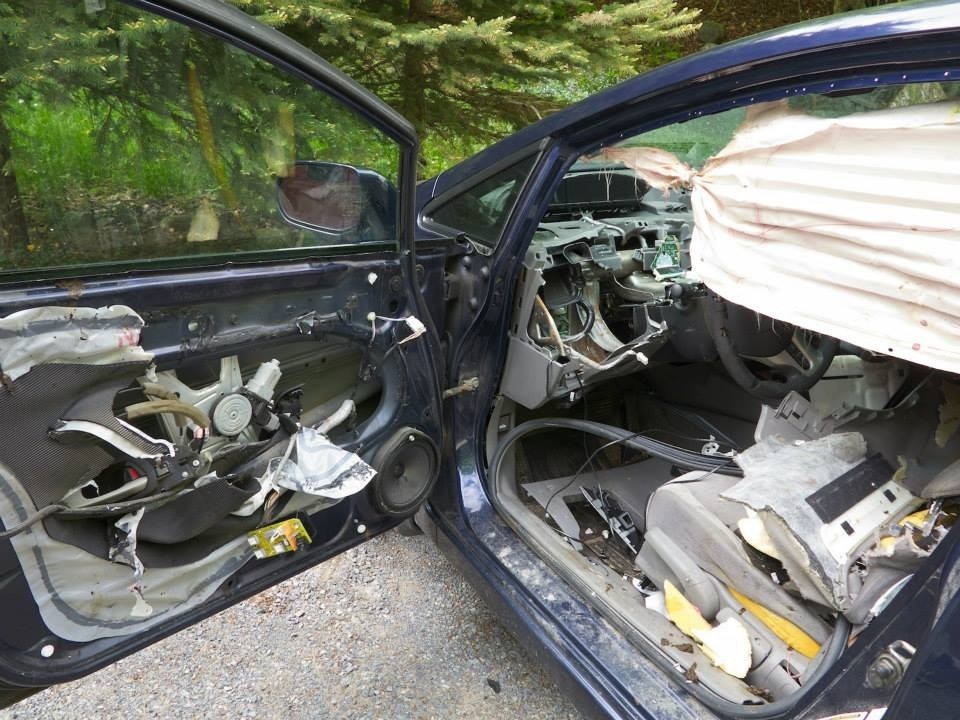Protecting Young Wildlife When Managing Habitat
 With warm weather, plenty of rain and abundance of sun, fields and yards quickly become a jungle of wild flowers, grasses and other greenery. While those fields of green may be a chore to landowners, it’s a welcoming site for an expectant mother. Many species of ground nesting birds use these areas to construct their nests, as the habitat provides ample security cover to protect their young and numerous food sources to feed their hatchlings. Mammals will also use these dense grass patches for their young. While everyone thinks of rabbit nests in tall brush, white-tailed deer will also give birth in these dense grasses. In the first few weeks following birth, female deer will leave their fawns in secure places while they forage. Since fawns have very little scent and are less nimble than adult deer, being still and quiet is the best defense against predators. This instinct can leave fawns susceptible to unexpected threats like lawn mowers and tractors. While conducting a walkthrough before mowing can help, a fawn’s camouflage and sit-and-stay behavior make it difficult to spot. It’s best to wait until later in the summer to conduct your first mowing to ensure that fawns, rabbits and birds have matured and are capable of evading mowers and tractors. With warm weather, plenty of rain and abundance of sun, fields and yards quickly become a jungle of wild flowers, grasses and other greenery. While those fields of green may be a chore to landowners, it’s a welcoming site for an expectant mother. Many species of ground nesting birds use these areas to construct their nests, as the habitat provides ample security cover to protect their young and numerous food sources to feed their hatchlings. Mammals will also use these dense grass patches for their young. While everyone thinks of rabbit nests in tall brush, white-tailed deer will also give birth in these dense grasses. In the first few weeks following birth, female deer will leave their fawns in secure places while they forage. Since fawns have very little scent and are less nimble than adult deer, being still and quiet is the best defense against predators. This instinct can leave fawns susceptible to unexpected threats like lawn mowers and tractors. While conducting a walkthrough before mowing can help, a fawn’s camouflage and sit-and-stay behavior make it difficult to spot. It’s best to wait until later in the summer to conduct your first mowing to ensure that fawns, rabbits and birds have matured and are capable of evading mowers and tractors.
Visit the DEC website for more information about what to do when encountering fawns and other young wildlife.
Antler Development Begins
 If you have been fortunate to spot a white-tailed deer in the past few weeks, whether it was grazing on your garden or running across the road, you may have noticed small antler nubs forming. The soft looking material that covers the forming antlers is known as “velvet.” As day length grows longer in the spring months, it triggers hormones that initiate the growth of velvet. The velvet is lined with blood cells that help promote and support antler growth during the summer months. If you have been fortunate to spot a white-tailed deer in the past few weeks, whether it was grazing on your garden or running across the road, you may have noticed small antler nubs forming. The soft looking material that covers the forming antlers is known as “velvet.” As day length grows longer in the spring months, it triggers hormones that initiate the growth of velvet. The velvet is lined with blood cells that help promote and support antler growth during the summer months.
By now, the healthiest bucks are putting on up to a quarter inch or more of new antler a day and showing signs of branching and tine development. At its peak, antlers are one of the fastest growing animal tissues. Large antlers are driven by both age, nutrition and genetics, with age being the most significant influence in New York. A yearling buck sporting short spike antlers its first year might grow an impressive 10-point rack by the time he is 3½ years old, if given the chance!
 As you watch the antlers develop on a young buck this summer, consider letting that buck walk when you encounter him this fall. As more hunters choose to pass young bucks, all hunters will enjoy the opportunity to see and take more, older bucks. Please visit Let Young Bucks Go and Watch Them Grow! As you watch the antlers develop on a young buck this summer, consider letting that buck walk when you encounter him this fall. As more hunters choose to pass young bucks, all hunters will enjoy the opportunity to see and take more, older bucks. Please visit Let Young Bucks Go and Watch Them Grow!
Take Steps to Reduce Conflicts Between Bears and People
 Black bears have been keeping DEC Wildlife staff busy, with numerous human-bear conflicts already this summer. Bears are often attracted to bird feeders, improperly stored garbage, messy grills, and pet food that is left outdoors. When people allow bears to have access to human-related foods, it encourages bear behavior that put people, property and bears at risk. Black bears have been keeping DEC Wildlife staff busy, with numerous human-bear conflicts already this summer. Bears are often attracted to bird feeders, improperly stored garbage, messy grills, and pet food that is left outdoors. When people allow bears to have access to human-related foods, it encourages bear behavior that put people, property and bears at risk.
Reducing human-bear conflicts requires changing human behavior. When we reduce attractants for bears, we protect people and property, and we do what’s best for bears too.
To reduce human-bear conflicts:
- Take down bird feeders after April 1st.
- Store garbage in a bear-resistant garbage can or keep inside until the morning of pick up.
- Clean up grease from grills after use.
- Feed pets indoors.
- Owners of backyard chicken flocks in bear country should also take steps to secure their flock and feed.
Visit DEC's website to learn more about how to reduce human-bear conflicts.
|


 With warm weather, plenty of rain and abundance of sun, fields and yards quickly become a jungle of wild flowers, grasses and other greenery. While those fields of green may be a chore to landowners, it’s a welcoming site for an expectant mother. Many species of ground nesting birds use these areas to construct their nests, as the habitat provides ample security cover to protect their young and numerous food sources to feed their hatchlings. Mammals will also use these dense grass patches for their young. While everyone thinks of rabbit nests in tall brush, white-tailed deer will also give birth in these dense grasses. In the first few weeks following birth, female deer will leave their fawns in secure places while they forage. Since fawns have very little scent and are less nimble than adult deer, being still and quiet is the best defense against predators. This instinct can leave fawns susceptible to unexpected threats like lawn mowers and tractors. While conducting a walkthrough before mowing can help, a fawn’s camouflage and sit-and-stay behavior make it difficult to spot. It’s best to wait until later in the summer to conduct your first mowing to ensure that fawns, rabbits and birds have matured and are capable of evading mowers and tractors.
With warm weather, plenty of rain and abundance of sun, fields and yards quickly become a jungle of wild flowers, grasses and other greenery. While those fields of green may be a chore to landowners, it’s a welcoming site for an expectant mother. Many species of ground nesting birds use these areas to construct their nests, as the habitat provides ample security cover to protect their young and numerous food sources to feed their hatchlings. Mammals will also use these dense grass patches for their young. While everyone thinks of rabbit nests in tall brush, white-tailed deer will also give birth in these dense grasses. In the first few weeks following birth, female deer will leave their fawns in secure places while they forage. Since fawns have very little scent and are less nimble than adult deer, being still and quiet is the best defense against predators. This instinct can leave fawns susceptible to unexpected threats like lawn mowers and tractors. While conducting a walkthrough before mowing can help, a fawn’s camouflage and sit-and-stay behavior make it difficult to spot. It’s best to wait until later in the summer to conduct your first mowing to ensure that fawns, rabbits and birds have matured and are capable of evading mowers and tractors. If you have been fortunate to spot a white-tailed deer in the past few weeks, whether it was grazing on your garden or running across the road, you may have noticed small antler nubs forming. The soft looking material that covers the forming antlers is known as “velvet.” As day length grows longer in the spring months, it triggers hormones that initiate the growth of velvet. The velvet is lined with blood cells that help promote and support antler growth during the summer months.
If you have been fortunate to spot a white-tailed deer in the past few weeks, whether it was grazing on your garden or running across the road, you may have noticed small antler nubs forming. The soft looking material that covers the forming antlers is known as “velvet.” As day length grows longer in the spring months, it triggers hormones that initiate the growth of velvet. The velvet is lined with blood cells that help promote and support antler growth during the summer months. As you watch the antlers develop on a young buck this summer, consider letting that buck walk when you encounter him this fall. As more hunters choose to pass young bucks, all hunters will enjoy the opportunity to see and take more, older bucks. Please visit
As you watch the antlers develop on a young buck this summer, consider letting that buck walk when you encounter him this fall. As more hunters choose to pass young bucks, all hunters will enjoy the opportunity to see and take more, older bucks. Please visit  Black bears have been keeping DEC Wildlife staff busy, with numerous human-bear conflicts already this summer. Bears are often attracted to bird feeders, improperly stored garbage, messy grills, and pet food that is left outdoors. When people allow bears to have access to human-related foods, it encourages bear behavior that put people, property and bears at risk.
Black bears have been keeping DEC Wildlife staff busy, with numerous human-bear conflicts already this summer. Bears are often attracted to bird feeders, improperly stored garbage, messy grills, and pet food that is left outdoors. When people allow bears to have access to human-related foods, it encourages bear behavior that put people, property and bears at risk.